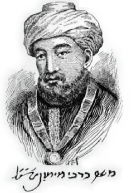Multimodal Imaging in Rhinoorbitocerebral Mucormycosis Associated with Type 2 Diabetes After COVID-19
Pavel Mikhailovich Zelter, Olesya Vladimirovna Zeleva, Egor Andreevich Sidorov, Dmitriy Vyacheslavovich Solovov, and Evgeniy Nikolaevich Surovtsev
AbstractPurpose: This case series analyzed the appropriateness of computed tomography (CT) and magnetic resonance imaging (MRI) for visualization of rhinoorbitocerebral mucormycosis (ROCM) patterns associated with type 2 diabetes (T2D) post-recovery from coronavirus disease 2019 (COVID-19).
Methods: The study included 24 patients with invasive ROCM after having recovered from COVID-19. All patients underwent CT examinations and microbiological and histological verification; 5 patients underwent MRI.
Results: The CT and MRI patterns noted in our patients revealed involvement of skull orbits, paranasal sinuses, large arteries, and optic nerves, with intracranial spread and involvement of the cranial base bones. Using brain scan protocol for CT provided better soft-tissue resolution. We found that extending the MRI protocol by T2-sequence with fat suppression or STIR was better for periantral fat and muscle evaluations.
Conclusion: Computed tomography of the paranasal sinuses is the method of choice for suspected fungal infections, particularly mucormycosis. However, MRI is recommended if there is suspicion of orbital, vascular, or intracranial complications, including cavernous sinus extension. The combination of both CT and MRI enables determination of soft tissue invasion and bony destruction, thereby facilitating the choice of an optimal ROCM treatment strategy. Invasive fungal infections are extremely rare in Europe; most of the related data are provided from India and Middle Eastern or African nations. Hence, this study is notable in its use of only diagnosed ROCM cases in Russia.
Rambam Maimonides Med J 2022;13(4):e0024
